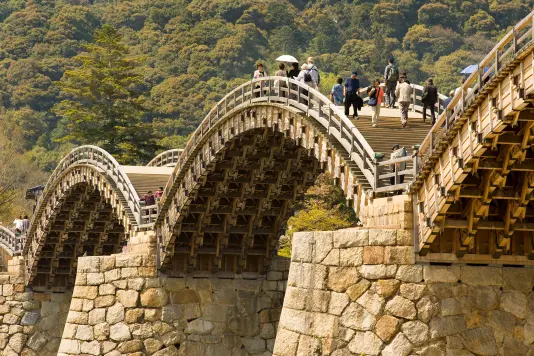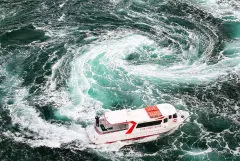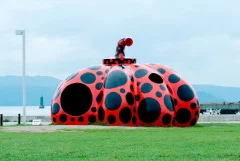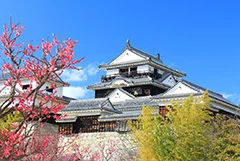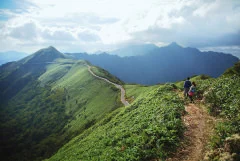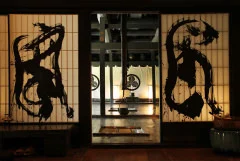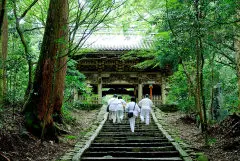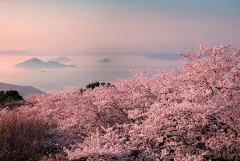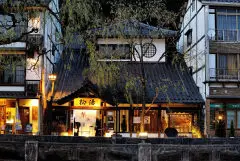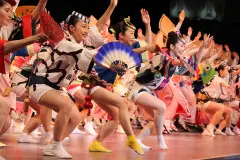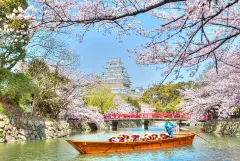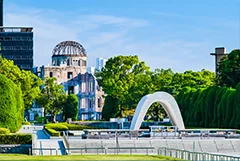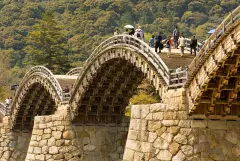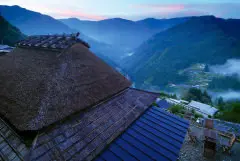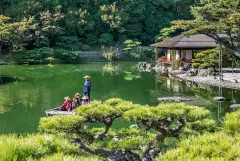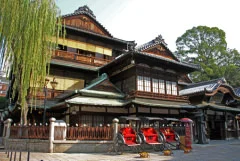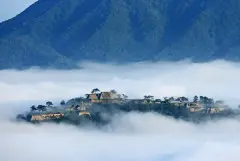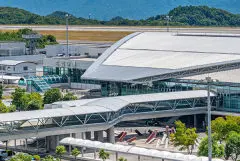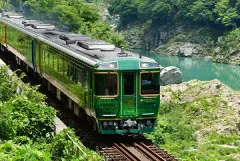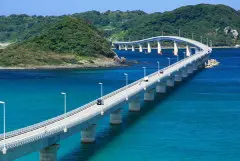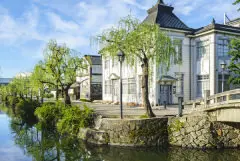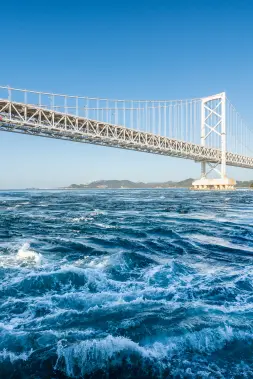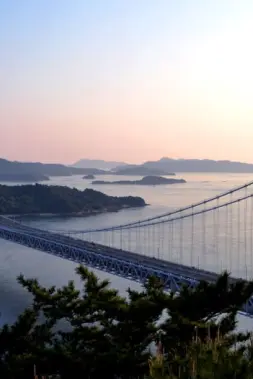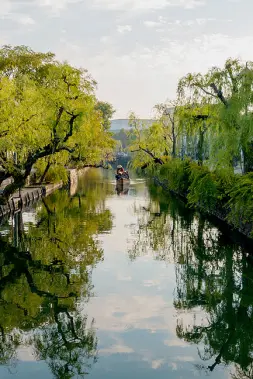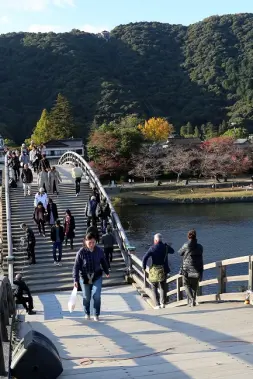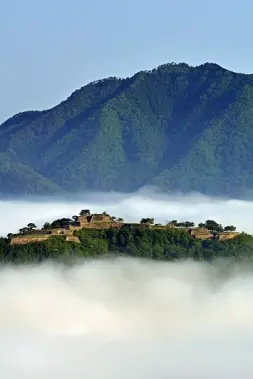Adventure & Experience
Visit Akiyoshidai, One of the Largest Karst Plateaus in Japan, and Akiyoshido, One of the Largest Limestone Caves in Japan

-
- DESTINATION NAME
- Yamaguchi
-
- RELATED TAGS
-
- LAST UPDATED
- 22 March, 2022
As Japan’s largest karst plateau, Akiyoshidai was designated a Quasi-National Park in 1955, and a Special Natural Monument in 1964. At around 300 meters above sea level, this densely staggered landscape of limestone formations surrounded by steep cliffs and plains is a rare sight in Japan. Akiyoshidai is at once a spectacular geological phenomenon, a scenic recreation site for trekking, cycling, or segway, and an educational geopark, one of the best places in Japan to learn about culture and nature.
A View of Akiyoshidai, A Karst Plateau Formed by the Dissolving of Limestone
Looking out over the undulating dry grasslands speckled with sharp gray rocks, it’s hard to believe that this was all once a coral reef. And yet, some 350 million years ago, this expansive karst plateau situated more than 15 km inland was entirely underwater. Then, over the millennia, tectonic plates shifted, a plateau rose out of the sea, coral turned to limestone, and rain dissolved the soft calcium carbonate limestone into the current topography of pinnacles, ridges, fissures, and sinkholes that we see today.
I visited Akiyoshidai in late autumn, as intermittent clouds cast dramatic shadows over the arid terrain, giving the impression of a rippling palette of vivid earth tones in the crisp wind. Gazing out from the Akiyoshidai Karst Observation deck, I imagined the same scene stretching out to the horizon in seasonal hues of lush green, reddish-yellow, or snow white.
With about an hour to explore the karst plateau, I set off on With about an hour to explore the karst plateau, I set off on a simple trekking course that began and ended at the Akiyoshidai Karst Observatory. I crossed very few people on the windy trail, where I spotted a few enduring red leaves, streaks of yellow pampa grass, cultivated green ferns. Craggy rocks protruding from the modest peak of Mt. Wakatake in the middle of the course were a stark reminder of the millennia-old layers of limestone that lay just under the grassy surface.
Scattered along the path near the ground were signboards, Scattered along the path near the ground were signboards, each asking a numbered question prompting visitors to examine the elements around them more closely and think about how they got to be that way. What caused the rocks to be hollowed out by holes? What is the black powder on the limestone? What kind of animal fossils are buried here? Detailed answers to these questions and more can be found at the joint Akiyoshidai Museum of Natural History.
There are five trekking courses to choose from to experience the karst plateau and its rich nature, depending on your physical strength and time available. For beginners, the Taisho Cave Course is a 1 hour and 5-minute walk through forests and grasslands. The Karst Observatory Course is an easy 55-minute nature observation plan. For intermediate trekkers, there is the Chojaga-mori Course (2), a 2 hour and 50-minute trek that traverses Akiyoshidai from north to south. Finally, for advanced hikers, the Chojagamori Course (1) takes about 2 hours and 25 minutes, and the Akiyoshidai Family Travel Village Course takes about 2 hours and 15 minutes and covers three mountains, including Ryugo Peak, the highest peak in Akiyoshidai.
There are also round-trip cycling routes that venture out into the vicinity: from the Akiyoshidai Tourism Information Center to Beppu Benten Pond and back (19 km); a tour of sacred sites Kinrei Shrine, Gansyo Temple, Kawachi Shrine, and Akiyoshi Hachimangu (24.5 km); along Road 242 (also known as “Karst Road”) that passes through the karst for about 8 km (total 28 km); an all-day ride to view popular sightseeing spots around Mine city, including in nearby Nagato city and to the famously photogenic Tsunoshima Bridge extending over the Sea of Japan (127 km).
Feel the Breeze of Akiyoshidai by Segway
For a more intimate exploration of the karst terrain without the hike, guided tours are also available on environmentally-friendly off-road Segways. The experience includes an hour-long introduction and lesson under the guidance of an instructor, followed by a 90-minute Segway tour of the karst. At each spot along the way, the guide explains various aspects of Akiyoshidai’s history and geology, giving you plenty of time to take photos and contemplate the surreal landscape around you.
Akiyoshido, a vast cave full of limestone wonders
Buried 100 meters underground at the southern end of Akiyoshidai Quasi-National Park, Akiyoshido is one of Japan’s largest and longest limestone caves, first noted in the historical record of Japan in 1354. Its total length extends over 10 km, of which 1 km is open to the public.
This section is maintained at a constant temperature of 17°C and equipped with ample lighting, paved paths, and steps, making it comfortable to navigate at any time of year. Here you can see melting stalactites, calcareous terraces formed by multiple layers of small dish-shaped ponds, and a cobalt blue stream flowing alongside the footpath. Most impressively, the cave contains many large and unique limestone formations, each symbolically named and respectfully highlighted with accompanying audio commentary in both Japanese and English.
There are three entrances to Akiyoshidō: the Main Entrance, the Kurodani Entrance, and the Elevator Entrance. The elevator is a five-minute walk from the Akiyoshidai Observatory and will take you down to near the Golden Pillar in the middle of the sightseeing course of Akiyoshidō. This time, we decided to take the “downhill course” entering from the Kurodani entrance and exited from the main entrance to head towards the Akiyoshidō shopping street.
I passed a myriad of dripping stalactites before encountering Koganebashira. The lime contained in the drops of water from the ceiling of the cave crystallized on the floor and formed a bamboo shoot shape upward. Now, it is an 8-meter-high, 3-meter-wide stalagmite that, at the rate of 2 centimeters per 500 years, must have taken over 100,000 years to grow up to its current size. Apparently, those dripping stalactites grow twice as fast. They formed huge jagged ceilings, baptized Senjojiki (“one thousand tatami mats”) and Kasazukushi (“umbrella medley”), and reached down to meet their stalactite siblings in the golden pillar of Koganebashira.
Further down the path, melting limestone accumulated in layered skirts to form Dounaifuji, a mini “Mount Fuji inside the cave” with its summit hidden in the clouds. On another wall, two long black horizontal lines marked the traces of a riverbed that flowed tens of thousands of years ago.
The Hyakumaizara (“one hundred dishes”) formation, the most spectacular in Akiyoshido Cave, is located near the end of the cave’s downhill route (near the main entrance). Water containing lime flows out from the top, forming puddles of various sizes like plates stacked on top of each other.
Just above the 20-meter-high main entrance, sunlight reflected on the water inside the cave to illuminate the Aotenjo ceiling in pale blue.
Although Akiyoshido’s resident bat population has decreased since the first electric light was installed in 1925, six different species of a few thousand bats still live inside the cave, so you might catch a glimpse of them. And if you’re there on a clear evening, why not spend the night on the karst plateau to gaze at its exceptionally starry sky?
The Yamayaki spring event is a tradition that has been passed down from generation to generation, taking its current form about 90 years ago. Originally, the burning was done for agricultural use, but now it is done to maintain the grassland landscape, prevent forest fires, and protect the ecosystem. By May, these burnt grasslands will be covered with fresh green shoots to welcome visitors to the karst plateau for the late spring and summer seasons.
Photographs and text by Cherise Fong
RELATED DESTINATION
Yamaguchi
Yamaguchi is surrounded by ocean, mountains and rivers and is characterized by its climate, which is comfortable throughout the year. Its natural scenery, which includes some 1,500 kilometers of coastline, is a cut above. The prefecture has Kintaikyo Bridge, one of the three most famous bridges in Japan, and other tourist attractions, and its fugu (pufferfish) is famous as a winter dish.
